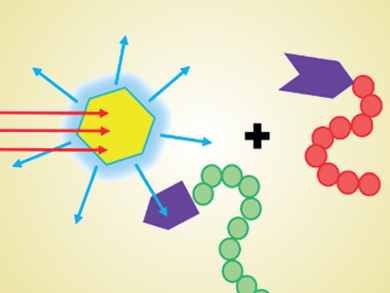The ability to induce the coupling of two molecules using light is an important tool in chemistry, biology, and materials science. A range of efficient light-induced ligation methodologies exist. However, the majority of the coupling techniques use UV light. Such high-energy irradiation can cause damage to complex molecules and biological species. In addition, the penetration ability of the UV irradiation is limited, thus constituting a major drawback for applications that require the linkage to occur inside biological materials.
James P. Blinco, Queensland University of Technology (QUT), Brisbane, QLD, Australia, Si Wu, Max Planck Institute for Polymer Research, Mainz, Germany, Christopher Barner‐Kowollik, Queensland University of Technology (QUT) and Karlsruhe Institute of Technology (KIT), Germany, and colleagues addressed this challenge.
The team combined upconversion nanoparticles (UNCPs) with photochemically induced nitrile imine-mediated tetrazole–ene cycloadditions (NITEC) to establish a photoligation technique triggered in the near-infrared regime. The coupling reaction proceeds in an efficient and rapid manner. It results in full conversion of the reagents (a pyrene aryl tetrazole derivative and UCNPs) and the exclusive formation of the desired coupling product (pyrazoline cycloadduct).
The researchers demonstrated the coupling reaction as through-tissue experiments with a biologically relevant biotin species. Importantly, all coupling reaction products are fluorescent in the near-infrared regime, which allows their detection in vivo.
- Near-Infrared Photoinduced Coupling Reactions Assisted by Upconversion Nanoparticles,
Paul Lederhose, Zhijun Chen, Rouven Müller, James P. Blinco, Si Wu, Christopher Barner-Kowollik,
Angew. Chem. Int. Ed. 2016, 55, 12195–12199.
DOI: 10.1002/anie.201606425




